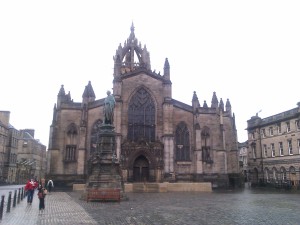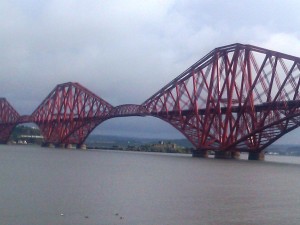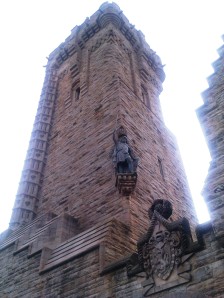
Shakespeare’s Globe is home to the Globe to Globe festival “bringing together artists from all over the globe, to enjoy speaking these plays in their own language, in our Globe, within the architecture Shakespeare wrote for. The artists will play the Globe way – telling stories through the word and the actor, complemented by costumes, music and dance – and will complete each play within two-and-a-quarter hours (we hope).” Visit the link provided and you will discover all there is to know about the festival, the plays, the dates and the booking process.
*****
As part of the Globe to Globe (which came to pass in the meantime) we watched the Israeli company Habima performing one of Shakespeare’s problem-plays, The Merchant of Venice. A controversial play which puts money and wealth above love. A play which demonstrates how witty lawyers can manipulate the law. A play about Christians mistreating and abusing a Jew, robbing him of his daughter, his fortune and, eventually, his dignity. A play heavy of tragic anti-Semitic messages, masterfully hidden among comic situations.
We chose to see this play for the same reasons we saw Macbeth in Polish: it’s Shakespeare and I know it well enough to be able to watch the performance without understanding the words spoken on stage.
The whole experience was a chain of surprises and emotions for me. The first surprise was the image outside the theatre, just before the performance.

I am sure I’ll sound dumb but I’ll confess I didn’t understand why supporters of the Palestinian cause were protesting against an Israeli company playing Shakespeare… Scattered along the bank, the Palestinian supporters carried banners, shouted slogans, gave short speeches, shouted slogans again, handed out flyers. Opposite them, some 50 yards to the left of the main entrance, Israeli supporters carried banners, shouted slogans, handed out flyers. I had no clue what it was all about, but, walking towards the entrance between the two groups, I felt they were both being unfair towards the cultural event that was about to happen.
 The next surprise was the “new front of house design” which made me feel as if I were in an airport, going through security check. After having my handbag checked, I went through the metal detection gate and, when I thought we’d be going into the theatre, we were stopped again and asked to put our water bottles in the bin – security measures again, trying to prevent access with things which could be thrown at people or on stage. Fair enough.
The next surprise was the “new front of house design” which made me feel as if I were in an airport, going through security check. After having my handbag checked, I went through the metal detection gate and, when I thought we’d be going into the theatre, we were stopped again and asked to put our water bottles in the bin – security measures again, trying to prevent access with things which could be thrown at people or on stage. Fair enough.
Inside the theatre, things didn’t seem to be different than they usually are, until Dominic Dromgoole, the Artistic Director of The Globe, came on stage, welcomed the audience, made humorous remarks about the security measures, asked the audience to keep calm and not intervene in case of disruptions as these will be dealt with immediately and discreetly by the security personnel. He pointed out that what we were about to see was art, not politics, performed by artists, not policy makers. The audience agreed with him all along and gave him several rounds of applause.
And, finally, the play began. It opened with the cast in Renaissance-dress and Venetian-masks, dancing and singing and clapping their hands, immediately infecting the audience to follow. In the middle of this carnival-like atmosphere, Shylock (Jacob Cohen) enters the stage and is immediately surrounded by the Venetian Christians who start mocking him and end up beating him down to the ground, thus, in just three minutes, showing us the place the Jew holds in their eyes/the Jews hold in the Venetian Christian society.

Assuming we all know the play and we all saw different performances and interpretations by great actors – Lawrence Olivier, David Suchet, Al Pacino, Al Pacino on Broadway, Mel Gibson, I will not insist upon the plot. Instead, I intend to point out those aspects of the staging which impressed me the most.
Two chairs – Antonio’s, Bassanio’s and Portia’s houses are suggested by a chair whose back had some rope tied in the shape of a cross. Shylock’s house is suggested by another chair with rope tied in the shape of the star of David on its back. The idea of suggesting places, thus also setting the audience’s expectations of certain behaviour in those places, seemed marvelous in its simplicity. The chairs looked something like this:

The ropes – During Portia’s first scene, while we learn about her father’s will and how she is bound by the lottery set forth in her father’s will, which makes potential suitors choose between three caskets, Nerissa takes, one by one, six silky ropes attached to the back of Portia’s corset and places them in the hands of the six suitors they are discussing about. I will confess it took me a little while to realise that the ropes were meant to emphasize her bond to her father’s whimsical will: she “may not choose none, nor refuse none“. When Bassanio makes his choice and discovers Portia’s portrait in the lead casket – in our case, a puppet head which looked ridiculously like Portia’s, Nerissa helps her mistress get rid of the corset and the ropes: her bond to her father has come to an end, she is now free from it, although she’ll soon be bound to her new husband.

In the trial scene, the ropes are used again – a plus, they say, for the director who manages to be consistent about the use of certain props across the play. Antonio is now tied by ropes going in different directions across the theatre, tied to the stalls and columns or held by two hooded clerks. This time, the ropes suggest Antonio’s relationship with the Venetian society which, by its own laws, has made it possible for Shylock to claim “his bond“. During the trial, while the tension builds up and Shylock comes closer and closer to having his bond and cutting “a pound of flesh” from Antonio’s chest, the ropes tighten. When the young doctor turns the tables against Shylock
“For, as thou urgest justice, be assured
Thou shalt have justice, more than thou desirest.“,
Antonio is freed and Shylock takes his place, the ropes now binding him to the Venetian laws… In my opinion, one of the most emotional moments in the play – the moment Shylock gives up his religion and becomes a Christian – was shadowed by the ropes and Shylock’s struggle against the Venetian law.
The bond (and other contracts…) – Starting with Launcelot’s showing Shylock the rates and continuing with all the other contracts appearing in the play, all paperwork is presented on continuous stationery which seems an endless pile. Whenever the unfolding of these documents happens, it makes the audience burst out laughing. Yet, besides mocking the interminable length of modern contracts, I think the director’s intention was to suggest that all the contracts in the play are more important than we might think, being nothing less than legal bonds which drastically limit the characters’ freedom.

When Bassanio chooses the lead casket, he finds such an endless document in it and he is so busy reading all the ‘terms and conditions’ of the contract that he overlooks Portia’s happy reaction and her expectations of receiving a kiss as immediate proof of his deep love for her. Instead, the audience is made to understand that Bassanio’s main reason for wooing Portia was her money, not love.
At the end of the trial scene, Shylock’s contract with Antonio is lying on stage and Gratiano picks it up and wraps it around Shylock’s head, thus emphasizing that he receives more justice than he had wished for. The bond he thought he was entitled to claim under the laws of Venice has, in the end, turned against him and destroyed him completely, leaving him with no daughter, no money, no religion and no dignity.
*****
I enjoyed the play very much. The actors were really good and credible and the director’s approach was interesting, so I left the theatre with the feeling I have learned new things. Over the last 2-3 weeks, I found myself thinking again and again about the performance, which is another sign that I really liked it.
Would you like to read other people’s opinions about this performance? Here’s The Guardian, David Hirsh, BBC News, Evening Standard
There are two more plays I want to write about: Henry V at Shakespeare’s Globe and Julius Caesar at Royal Shakespeare Theatre in Stratford-upon-Avon…





















